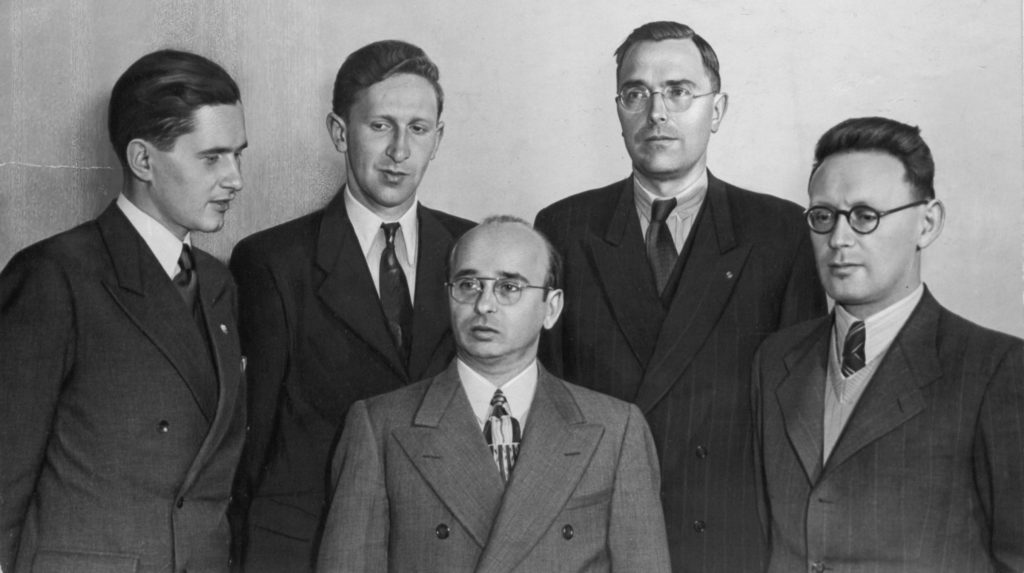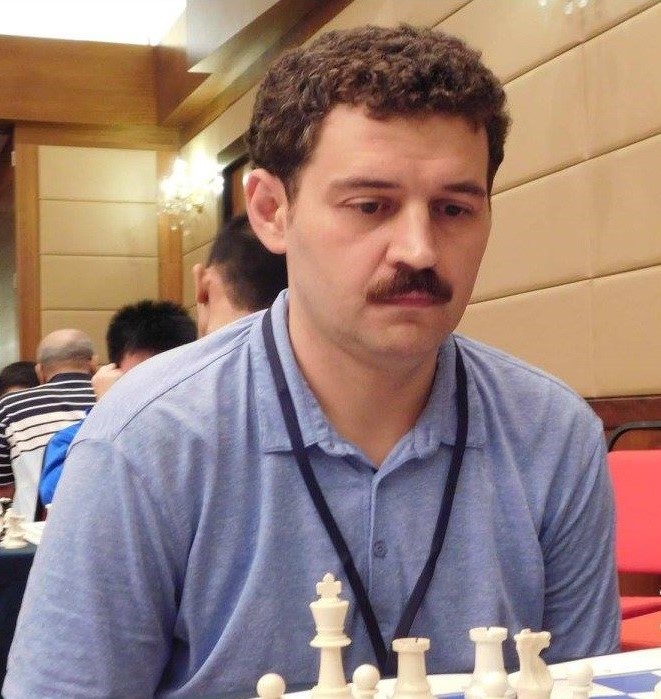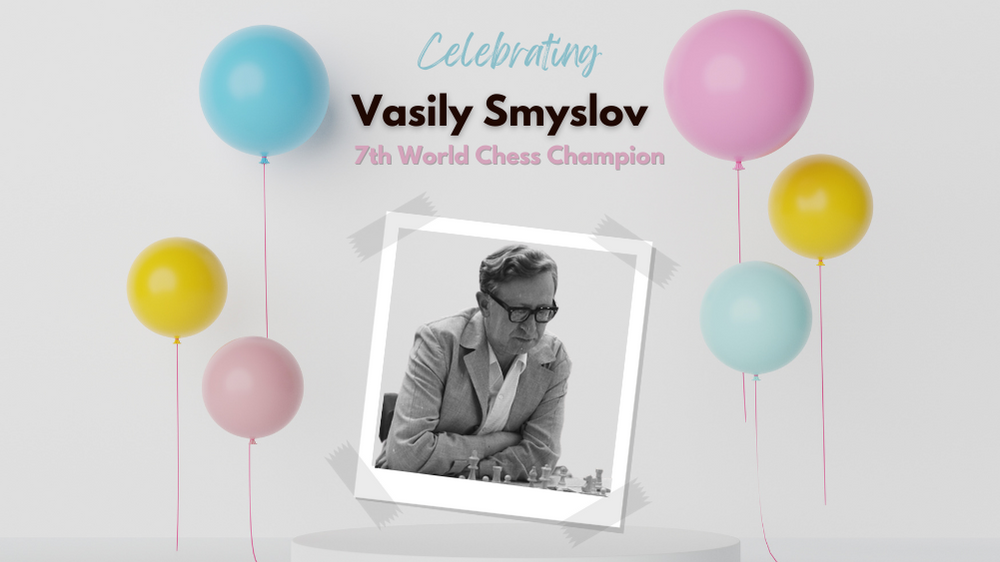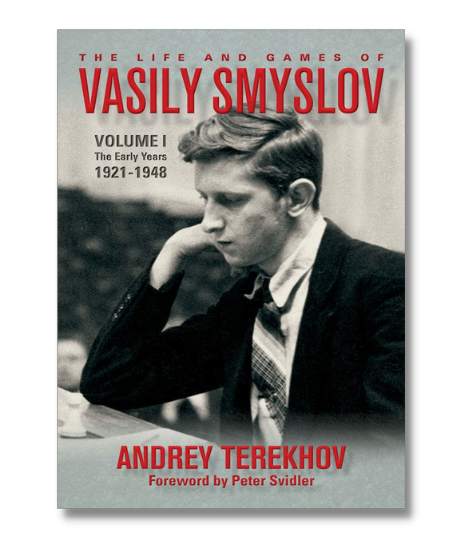By Andrey Terekhov
Vasily Smyslov, the 7th World Chess Champion, was born on this day, 102 years ago. He played in four chess World Championships from 1948 to 1958 and became the 7th World Champion by defeating Mikhail Botvinnik in 1957. He would lose the title in the return match in 1958, but a quarter of the century later, he made a stunning comeback, making it all the way to the Candidates Final match. Only the unlimited energy of the young Garry Kasparov could stop Smyslov from qualifying for another world championship match at the ripe-old age of 63.

(Photo: Suyk, Koen, ANEFO, Dutch National Archives.)
Yet, of all the world champions that the chess world has had to this date, Smyslov remains one of the least known. His style was not as flashy as Alekhine or Tal, and the more recent champions, such as Karpov or Carlsen, are better known today when it comes to strategic play.
I was first introduced to Smyslov’s games when I was a small kid. My coach at the time was big on chess fundamentals and thus I saw a lot of games by Capablanca, Botvinnik, Karpov – and yes, Smyslov. His play was magnificent and had that Mozart-like lightness about it, which is why Vladimir Kramnik once described Smyslov as “the truth in chess”.
A few years after Smyslov passed away I bought a collection of his best games. It was Smyslov’s “magnum opus”, a book that contained 326 of his games played from 1935 and almost all the way to the end of his career as a player (well, not quite, as the book was published in 1995, while Smyslov continued to play until his eyesight failed, and that was already in the 21st century!) All games were annotated by Smyslov himself and replaying them felt like a reunion with a long-lost friend. I was once again in awe of the beauty of the games and the clarity of the annotations.
I started looking for other books on Smyslov… but could not find anything! There were literally no biographies of Smyslov – only the books that the 7th World Champion wrote himself. I kept on waiting, hoping that one day a renowned grandmaster or a famous chess historian would cover this gap in the chess literature, but then I realized that this day may never come, and so I decided to write it myself.
Fast-forwarding a few years, I spent analyzing Smyslov’s games, studying in the libraries, and reading old newspapers, chess journals, and tournament bulletins. Finally, I was able to get in touch with Smyslov’s heirs and spent a week sorting out his personal archives in the house where the world champion spent the last years of his life.
At the end of 2020, this work culminated in the publication of the first volume of what is hopefully going to be a long series on Smyslov, “The Life and Games of Vasily Smyslov. The Early Years: 1921-1948”, which is available on ForwardChess. This book describes Smyslov’s ascent from an unknown and unranked chess amateur to the youngest participant in the World Championship match tournament that was organized in 1948 after the death of Alexander Alekhine.
The world that we live in today is vastly different from the one that Smyslov grew up in the late 1930s. Suffice it to say that Smyslov played his first tournament game only a few months after turning 14; today there are over dozen players who managed to achieve a grandmaster title by that age! (curiously enough, Smyslov even played a match against one of these prodigies, losing 1:5 to 13-years-old Etienne Bacrot in 1996)
However, in his time Smyslov was a prodigy in his own right, and in this book, I am tracing his meteoric rise in the late 1930s-early 1940s. After a relatively late start to his “official” chess career, he progressed at a breakneck pace, winning almost every tournament that he played in (some of them with 100% scores!), becoming a junior champion of the Soviet Union in 1938, then scoring a newly introduced Candidate Master title by winning an all-Soviet adult competition of First Category players in August 1938, before finally scoring a Master title by winning the Moscow championship in October. At the age of 17, Smyslov became the youngest master in the Soviet Union (which should probably tell you how difficult that title was to achieve).

This string of successes was followed by a breakthrough performance in Smyslov’s first Soviet Union championship in 1940, where he finished with a bronze medal – but ahead of Keres, Botvinnik, and Boleslavsky! (Bondarevsky and Lilienthal were the surprise winners)
In 1941, after another bronze in the Absolute championship of the Soviet Union (this time behind Botvinnik and Keres) Smyslov became the youngest grandmaster in the Soviet Union and, arguably, in the world.
Yes, there were times when a 20-year-old grandmaster was considered very young. For the next half a century teenage grandmasters would continue to be an exception, rather than a rule (the next youngest grandmaster would be Spassky, who became a GM at 18, then Fischer would famously push the record to 15½).
Let’s take a look at a game that was typical for the energetic style of the young Smyslov:
By 1940-41 Smyslov became one of the strongest chess players in the world. According to Chessmetrics, Smyslov broke into the Top 10 by October 1940 and would remain there for 30 years straight, until 1970!
However, in the 1940s Smyslov still struggled in head-to-head encounters with the best of the best. Smyslov’s score at the time against Botvinnik, Keres, and Reshevsky was negative – although it should be pointed out that all of these challengers for the throne were 5-10 years older than Smyslov and thus much more experienced. In the 1930s all of them had the opportunities to cross swords with the likes of Lasker and Capablanca – the demi-gods that Smyslov saw only as a spectator at the 1935-36 Moscow International Tournaments, but never got to face at the board.
It took 10-15 years before Smyslov managed to overtake Keres and Reshevsky. In the end, he did it in the most convincing fashion – by winning two Candidates’ tournaments in a row. It took longer still – two decades and two more World Championship matches! – before Smyslov finally managed to defeat Botvinnik.
However, it was in the 1940s that Smyslov managed to score his first victories against his chief competitors. One of the last games that I analyze in detail in my book is Smyslov’s victory over Reshevsky in the 1948 World Championship match tournament. It is one of the best-known games by Smyslov and provides a great illustration of the refined and logical style that he developed and that would become his trademark until the last days of his long and illustrious career.

Here it is with abridged notes (in the book I dive deeper into the theoretical debate that raged at the match tournament, and compare the annotations of this game by Smyslov, Keres, Kasparov, and other famous commentators):
If you would like to learn more about Smyslov’s incredible rise to the top, you can check “The Life and Games of Vasily Smyslov. The Early Years: 1921-1948” on ForwardChess. The book contains 48 deeply annotated games, as well as his detailed biography, including previously unpublished photos and letters from Smyslov’s personal archive.
Andrey Terekhov

Andrey Terekhov is a FIDE Master and an ICCF International Master (correspondence chess). He is the author of “The Life and Games of Vasily Smyslov. Volume 1: The Early Years. 1921-1948” and currently resides in France.
- The Power of Pattern Recognition: The Woodpecker Method 2 - August 20, 2024
- Rock Solid Chess: Volume 2 - February 21, 2024
- Unsung Heroes of Chess - February 19, 2024

